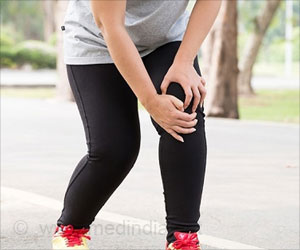Boosting levels of HIF-1 protein through pills can lead to improved tissue repair and reduce blood loss.
Highlights
- A key protein called HIF-1 could explain why heavy bleeding occurs.
- Women with low levels of the protein have heavier menstrual flow.
- Increasing the levels of the protein can help in the healing of the womb lining and reducing menstrual flow.
Women with heavy periods had reduced levels of HIF-1 compared with women with normal blood loss. Lowered levels of oxygen - known as hypoxia - stimulates the production the protein HF-1, which drives repair of the womb lining.
The scientists explored how the shedding of the endometrium (the womb lining) is linked to dropping levels of oxygen during menstruation. The University of Edinburgh researchers have developed a new drug that tricks the womb into healing faster, which stops your bleeding sooner.
Tests on mice using a drug to boost levels of HIF-1 led to improved tissue repair and reduced blood loss. The results offer hope for therapies, the scientists noted.
Dr Jackie Maybin said, "Our findings reveal for the first time that HIF-1 and reduced levels of oxygen in the womb are required during a period to optimise repair of the womb lining. Excitingly, increasing levels of the HIF-1 protein in mice shows real promise as a novel, non-hormonal medical treatment".
Dr Neha Issar-Brown, Head of Population and Systems Medicine at the MRC, noted, "Heavy bleeding is a debilitating condition that a staggering number of women have to live with. Unfortunately, there aren't many therapies to help alleviate discomfort from menorrhagia which, added to the obvious emotional impact, can severely impact women's day-to-day activities and well-being".
Diagnosing heavy menstrual bleeding can be subjective, but the medical community defines it as blood loss of more than 80 millilitres per menstrual cycle.
It can lead to severe abdominal pain and disrupt daily life, as well as giving rise to other symptoms, such as bloating, unscheduled bleeding, and fatigue.
Current therapies to ease heavy bleeding are hormone-based and often prevent pregnancy. Developing a possible drug target to increase HIF-1 protein levels can help reduce heavy menses.
Causes of heavy menstrual bleeding are:
Local Uterine and Ovarian Causes:
- Fibroids: Fibroids are benign tumors of the muscle of the uterus. They cause heavy bleeding. Other symptoms include pelvic pain and pressure, discomfort during sexual intercourse and a need to urinate frequently.
- Polyps: Endometrial polyps are outpouchings of tissue from the inner lining of the uterus that remain attached to the inner lining by means of a stalk. Symptoms include vaginal discharge, vaginal bleeding after intercourse, and irregular, heavy and painful menstrual periods. Polyps are removed through surgery, cautery or laser therapy.
- Infection: Infection especially with sexually transmitted diseases like gonorrhea and chlamydia can cause excessive bleeding. The patient also complains of vaginal discharge.
- Adenomyosis: Adenomyosis is a condition where the inner lining of the uterus is excessively thick and invades into the muscle layer. Symptoms include heavy and irregular bleeding, lower abdominal pain, pain during intercourse and bleeding in between periods.
- Dysfunctional Uterine Bleeding: Dysfunctional uterine bleeding is an abnormal bleeding that is not due to any obvious cause. Symptoms may include absent periods, irregular periods, or heavy and painful menstrual periods.
- Pregnancy-related Complications: In a woman complaining of heavy bleeding, it may be necessary to check for undetected pregnancy and rule out any pregnancy-related complications like miscarriage.
- Trauma: Trauma to the uterus, cervix and vagina could result in excessive bleeding, that may be mistaken for menstruation. These patients should also be evaluated for possible sexual abuse.
- Cancers: Cancer affecting the uterus may cause symptoms like heavy and irregular menstrual periods, bleeding after menopause, vaginal discharge, lower abdominal and back pain, fatigue and weight loss.
- Endometriosis: Endometriosis is a condition where the tissue lining the uterus is found in parts outside its normal position. The tissue lining the uterus is normally shed during menstruation. Thus, the abnormally positioned tissue also bleeds during menstruation giving rise to symptoms like pain in the abdomen and lower back, heavy vaginal bleeding, painful and prolonged menstrual periods, and pain during intercourse.
- Ovarian Cysts: Ovarian cysts are fluid-filled sacs present in the ovaries. Symptoms include lower back, abdominal or pelvic pain that may worsen during intercourse. Other symptoms include painful, heavy and irregular menstrual periods. In many cases, ovarian cysts resolve without treatment.
- Copper Intrauterine Device: Contraceptive devices placed in the uterus like Copper-T can cause heavy or irregular bleeding in some women. The device may have to be removed in such cases and replaced by another contraceptive.
Source-Medindia













